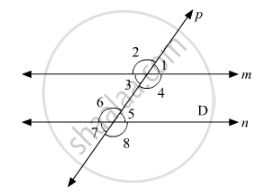Advertisements
Advertisements
प्रश्न
If two lines intersect, prove that the vertically opposite angles are equal.
उत्तर
Let us draw the figure.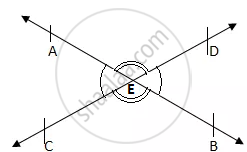
Here, we can see that
AB and CD intersect each other at point E.
The two pairs of vertically opposite angles are:
1st pair – ∠AEC and ∠BED
2nd pair – ∠AED and ∠BEC
We need to prove that the vertically opposite angles are equal, i.e.,
∠AEC = ∠BED and ∠AED = ∠BEC
Now, we can see that the ray AE stands on the line CD.
We know, if a ray stands on a line then the sum of the adjacent angles is equal to 180°.
⇒ ∠AEC + ∠AED = 180° (By linear pair axiom) ...(i)
Similarly, the ray DE stands on the line AEB.
⇒ ∠AED + ∠BED = 180° (By linear pair axiom) ...(ii)
From equations (i) and (ii), we have
∠AEC + ∠AED = ∠AED + ∠BED
⇒ ∠AEC = ∠BED ...(iii)
Similarly, the ray BE stands on the line CED.
⇒ ∠DEB + ∠CEB = 180° (By linear pair axiom) ...(iv)
Also, the ray CE stands on the line AEB.
⇒ ∠CEB + ∠AEC = 180° (By linear pair axiom) ...(v)
From equations (iv) and (v), we have
∠DEB + ∠CEB = ∠CEB + ∠AEC
⇒ ∠DEB = ∠AEC ...(vi)
Thus, from equation (iii) and equation (vi), we have
∠AEC = ∠BED and ∠DEB = ∠AEC
Therefore, it is proved that the vertically opposite angles are equal.
APPEARS IN
संबंधित प्रश्न
In the given figure, if x + y = w + z, then prove that AOB is a line.
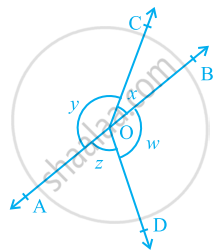
Write the complement of the following angles.
90°
Two supplementary angles are in the ratio 4 : 5. Find the angles.
If the angles (2x −10)° and (x − 5)° are complementary angles, find x.
If the complement of an angle is equal to the supplement of the thrice of it. Find the measure of the angle.
If the supplement of an angle is two-third of itself. Determine the angle and its supplement.
How many pairs of adjacent angles, in all, can you name in below fig.?
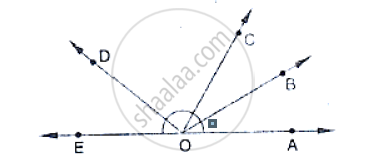
In below figure, lines AB and CD intersect at O. If ∠AOC + ∠BOE = 70° and ∠BOD =
40°, find ∠BOE and reflex ∠COE.
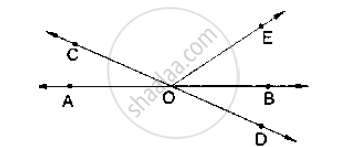
statement are true and false
Angles forming a linear pair are supplementary.
In the below fig, transversal 𝑙 intersects two lines m and n, `∠`4 = 110° and `∠`7 = 65°. Is m || n?
